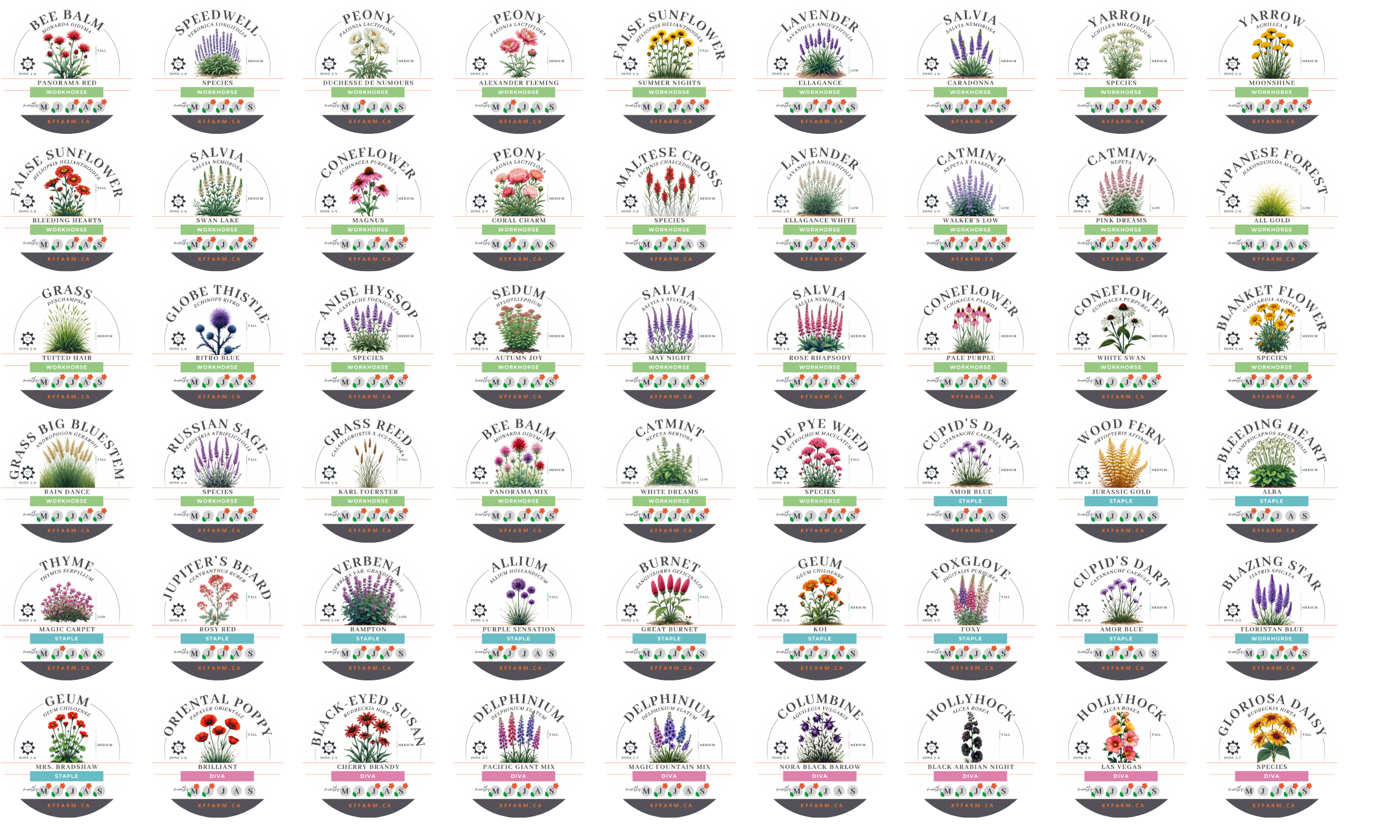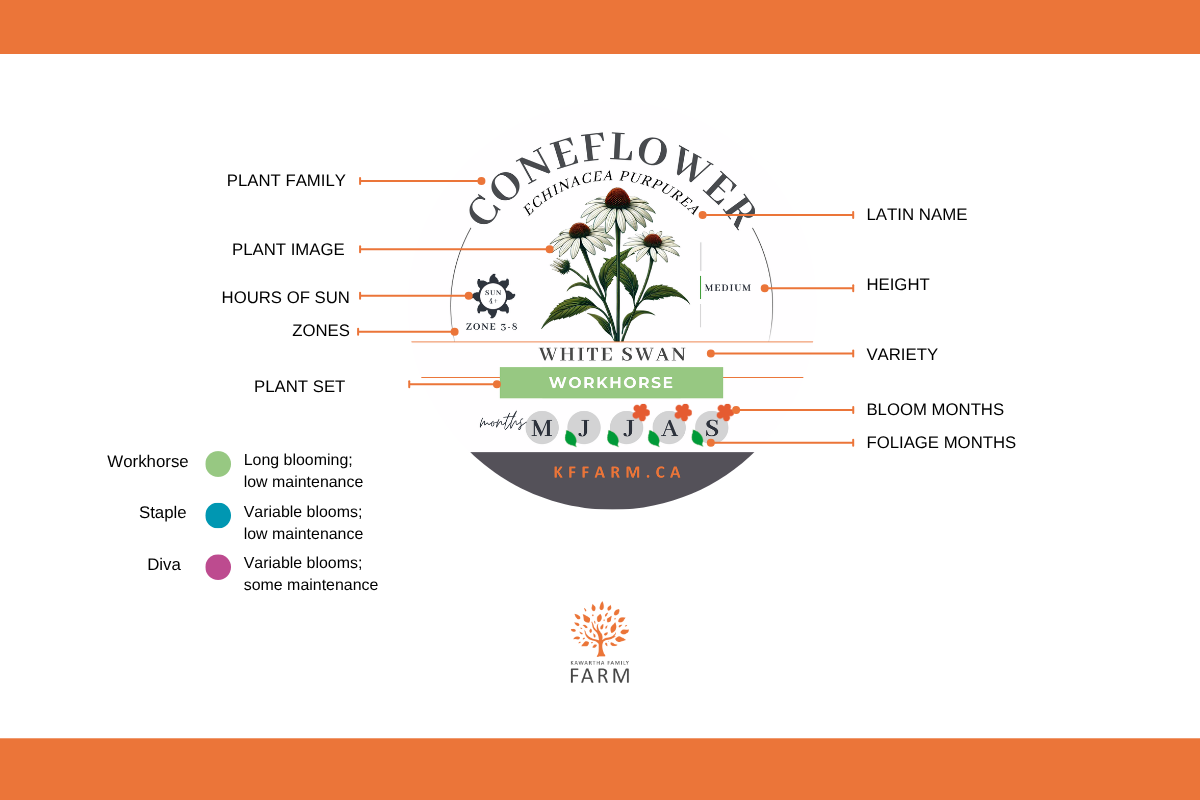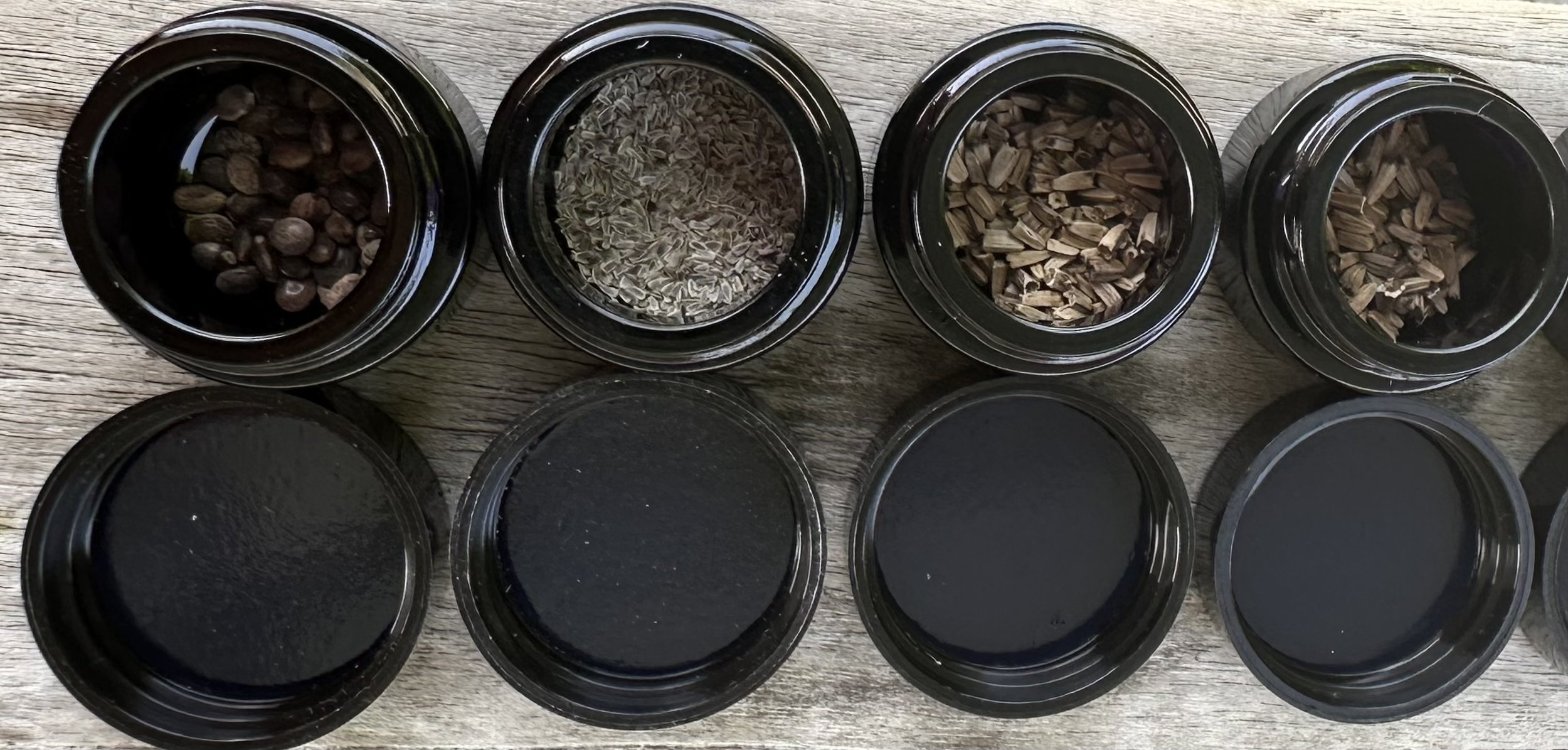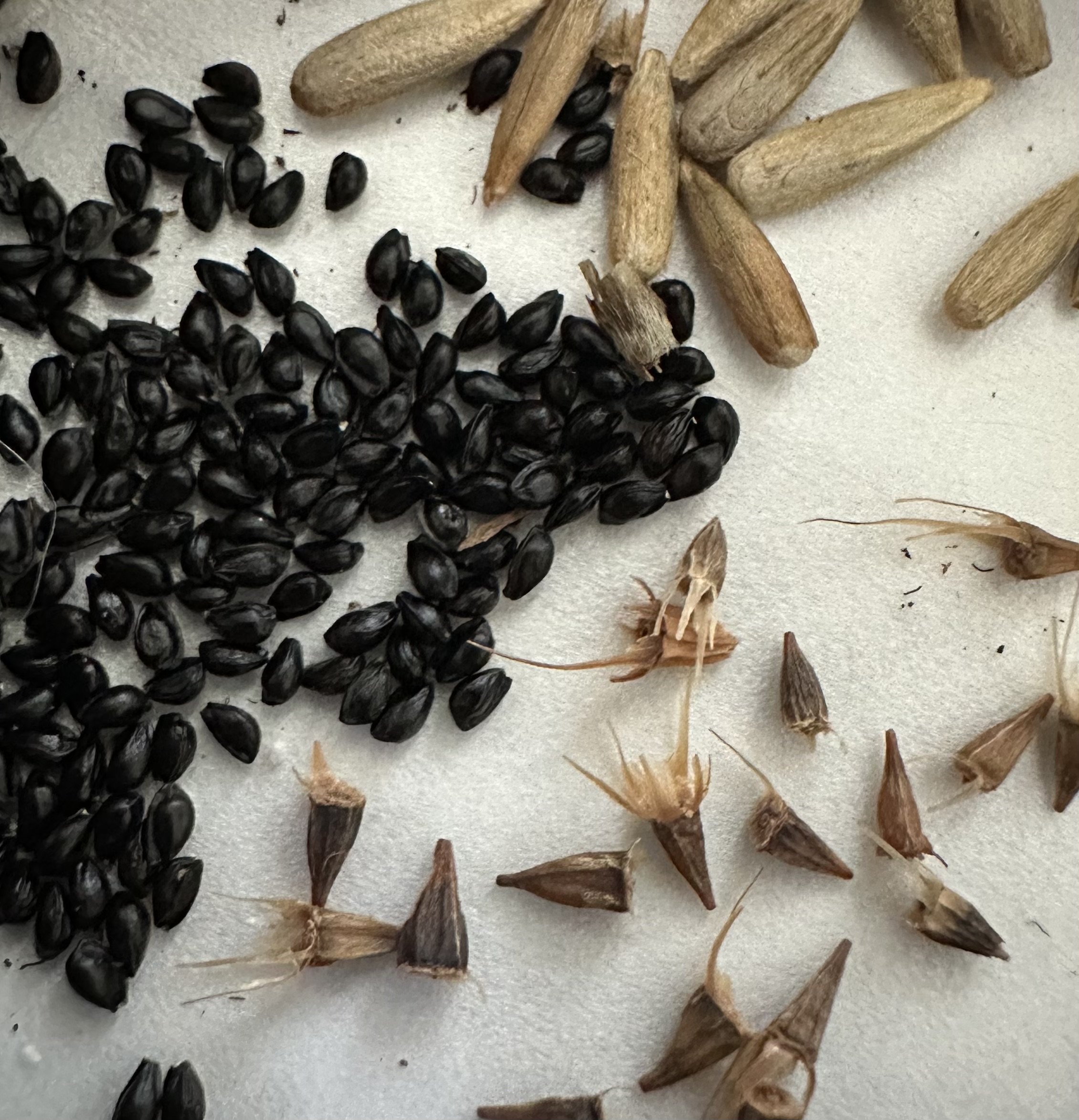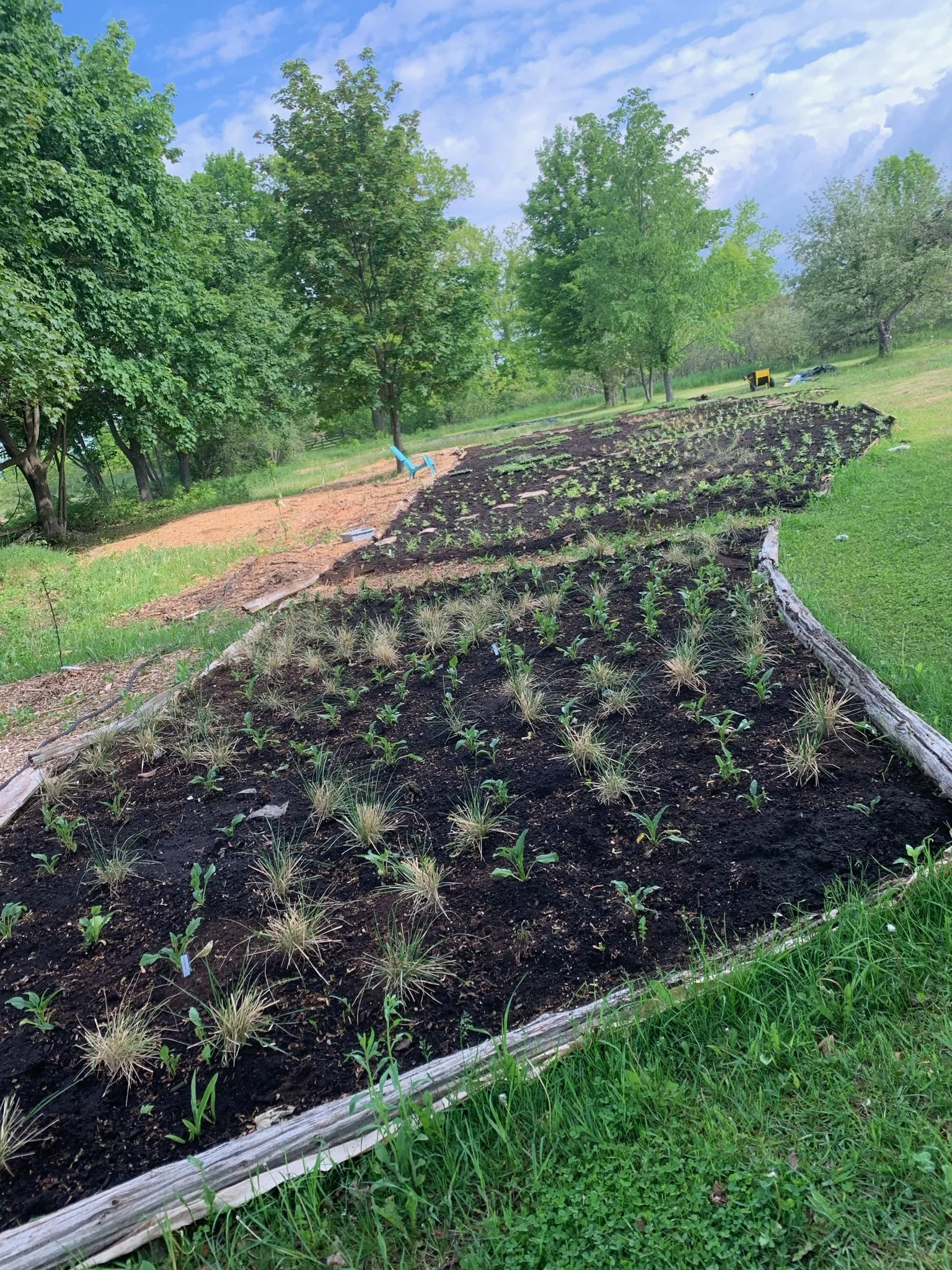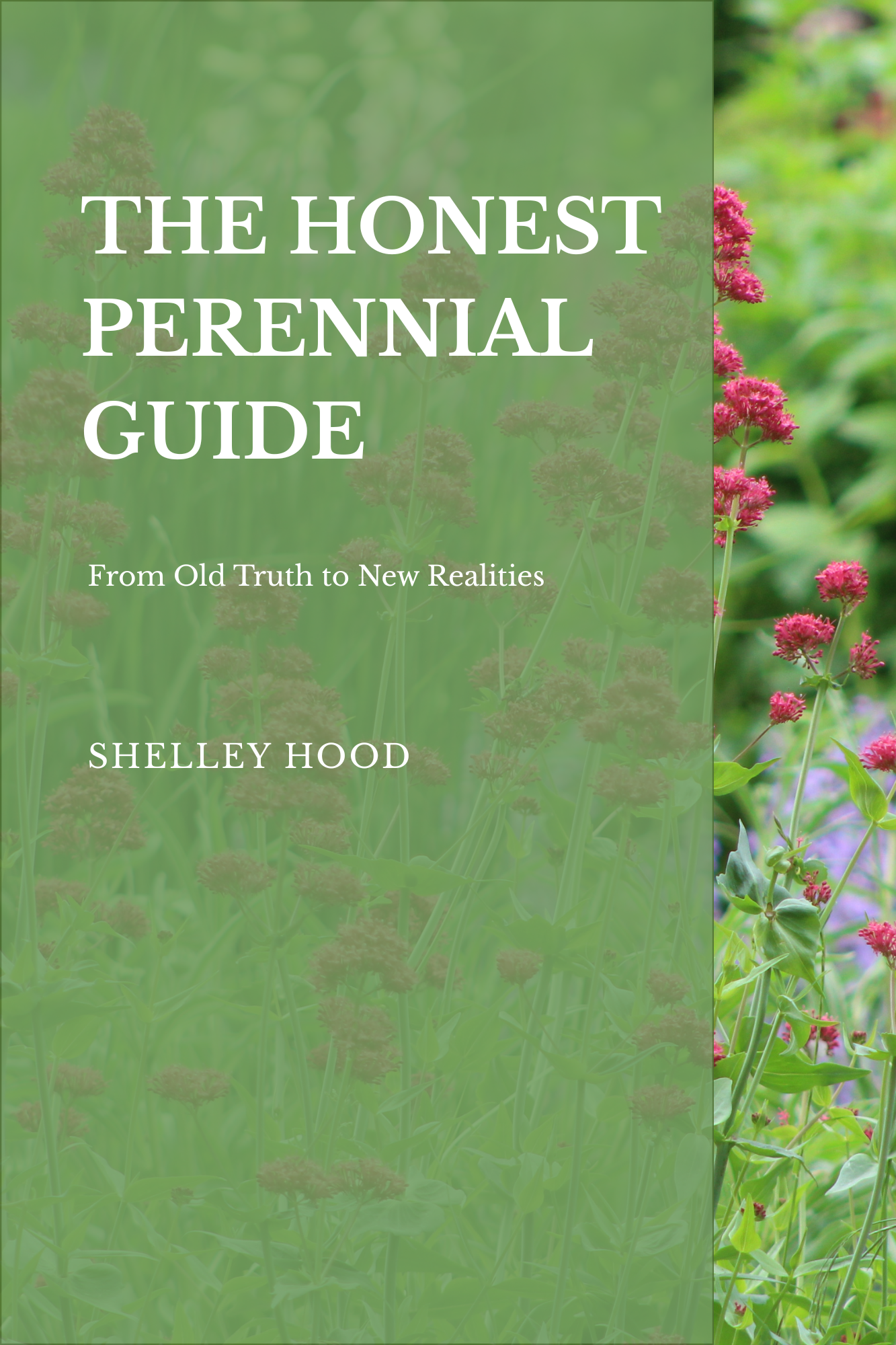The Satisfaction of Seeding
I underestimated the absolute joy, I would derive from growing from seed. It wasn’t until my favourite varieties kept disappearing that I gave it a try.
There was no turning back.
To see this garden, emerge from seed, nurtured by us feels nothing short of a miracle.
Curated Seed Collection
All seeds are not created equal.
We select seeds from the most advanced breeders in the world. Advancements in breeding technology have introduced improved germination rates, disease prevention and eliminate the need for treatment.
In fact, many of the seeds in our collection will not only germinate quickly, but you’ll enjoy blooms in the first year.
All you really need to know to get started is whether the seed needs light or dark to germinate.
Then you’re off.
At-a-Glance Labels
Our labels provide you all the information you need - from germination to design.
Beautiful & Practical Jars
We’ve been on a mission to find a better solution for packaging seeds beyond traditional seed envelopes. We just don’t find them very functional—and unless you plant all your seeds in one go, they require additional storage.
Our violet glass jars solve all our seed packaging challenges. They’re designed specifically for delicate products, offering UV protection and moisture prevention, and they’re reusable.
These jars are both beautiful and combined with our labels, highly functional - it’s so easy to envision your new garden simply by shuffling the jars around.
These instructions are for the seeds that we sell. Our collection is curated for ease of growing. Many have been treated for advanced germination and disease prevention, eliminating steps that other perennial seeds may otherwise require.
Simple Seed Starting
Germinating.
The key difference between indoor and outdoor planting, is that indoors you want to use a soil-less medium (to prevent fungal issues), in a container that allows drainage.
Quite simply:
If the seeds requires light to germinate (as indicated on the label), press it into moist growing medium and expose it to light.
If it does not require light to germinate, press it into the soil about ¼ inch to ensure it’s fully covered.
Keep soil moist - use a spray bottle or light touch watering can. No need to drench.
Growing On.
Once your seed germinates it will start to take off. With minimal care you’ll have a thriving plant in no time.
Ideal temperatures for growing on perennials is 15-18 degrees C (give or take - don’t get too caught up in perfection.)
Expose to 10+ hours per day of light. Use artificial lighting indoors - a shop light will do. Keep it just a few inches above plant.
Keep watering (not drenching the plant).
Once you see it’s busting out of its vessel - or in the case of soil blocks the roots are maxed out, pot it up or plant it out.
Planting Out.
If you started your seeds indoors, you’re going to want to get them in your garden at some point.
You can plant outdoors anytime after first frost up to a few weeks before last frost. If your plant is still tiny it will be slightly more tender than a large plant.
Either way - water the hole well!
Plant at the depth so your plant is at ground level.
Water daily for 2-weeks. The plant, once established will need very little water.
Perennial Seed Myths
-
Truth: Advances in seed treatment and proper techniques make starting perennials much easier. Many germinate within days with the right conditions.
-
Truth: While some perennials may take longer, many are capable of blooming their first year with proper care and timing.
-
Truth: While stratification can help some species, treated seeds or proper germination environments often bypass this requirement. For example, our coneflowers germinate in a week without cold stratification.
-
Truth: While there are many sophisticated grow lights available today, you can get started with an everyday shop light.



